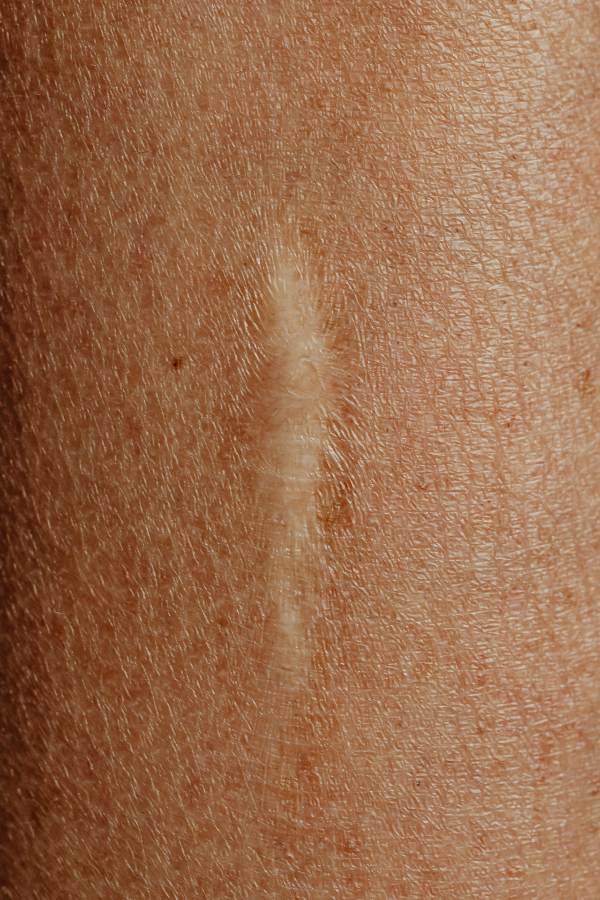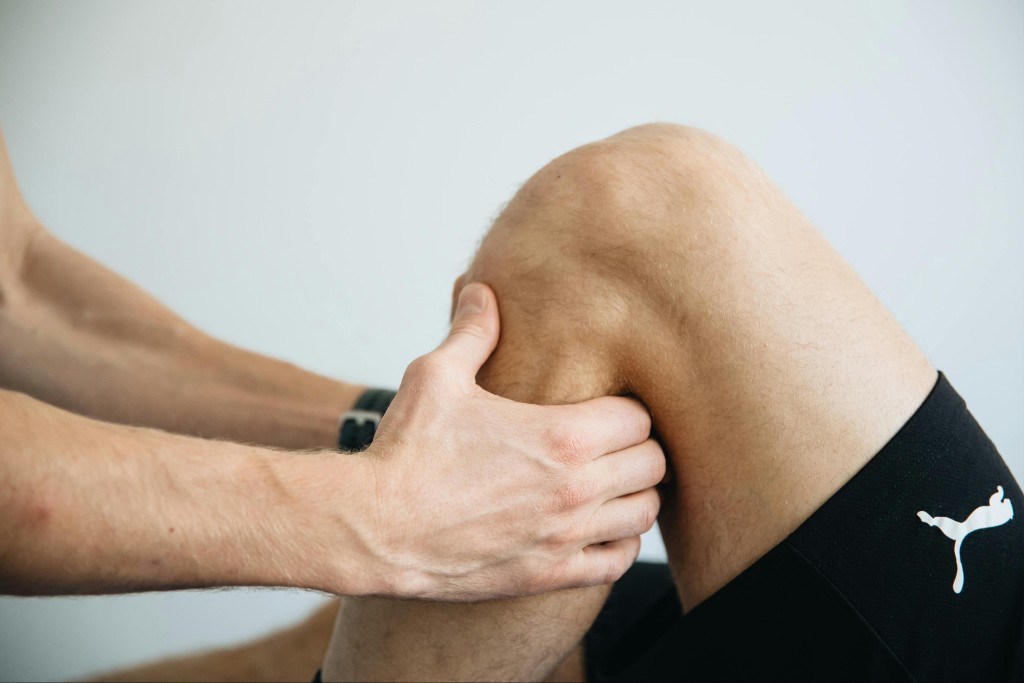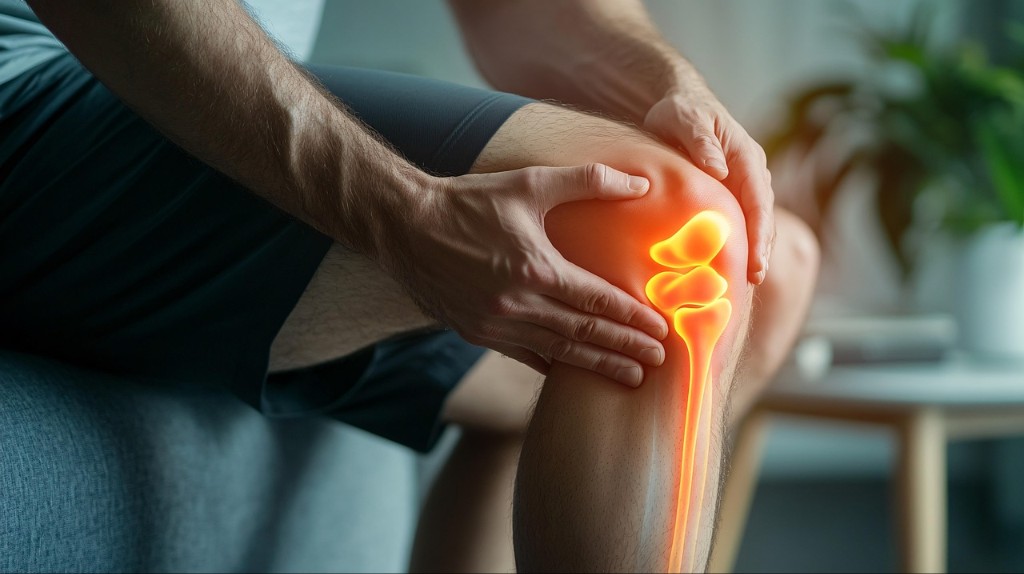Knee pain is incredibly common, affecting millions of people worldwide. Cortisone shots are a frequent first-line treatment, offering powerful anti-inflammatory relief. However, these injections come with potential side effects and may lose effectiveness over time. This raises the question: are there alternatives to cortisone shots for knee pain?
- Why Look for Alternatives to Cortisone Shots?
- Exploring Alternative Treatments for Knee Pain
- Physical Therapy: A Non-Invasive Approach
- Acupuncture: An Ancient Technique for Modern Pain Relief
- PRP Injections: A Natural Alternative
- SoftWave Therapy: Advanced Regenerative Healing
- Hyaluronic Acid Injections: Enhancing Joint Lubrication
- Lifestyle Changes: Long-Term Solutions for Knee Health
- Choosing the Right Treatment for Your Knee Pain
- The Best Shockwave Therapy for Knee Pain
Why Look for Alternatives to Cortisone Shots?
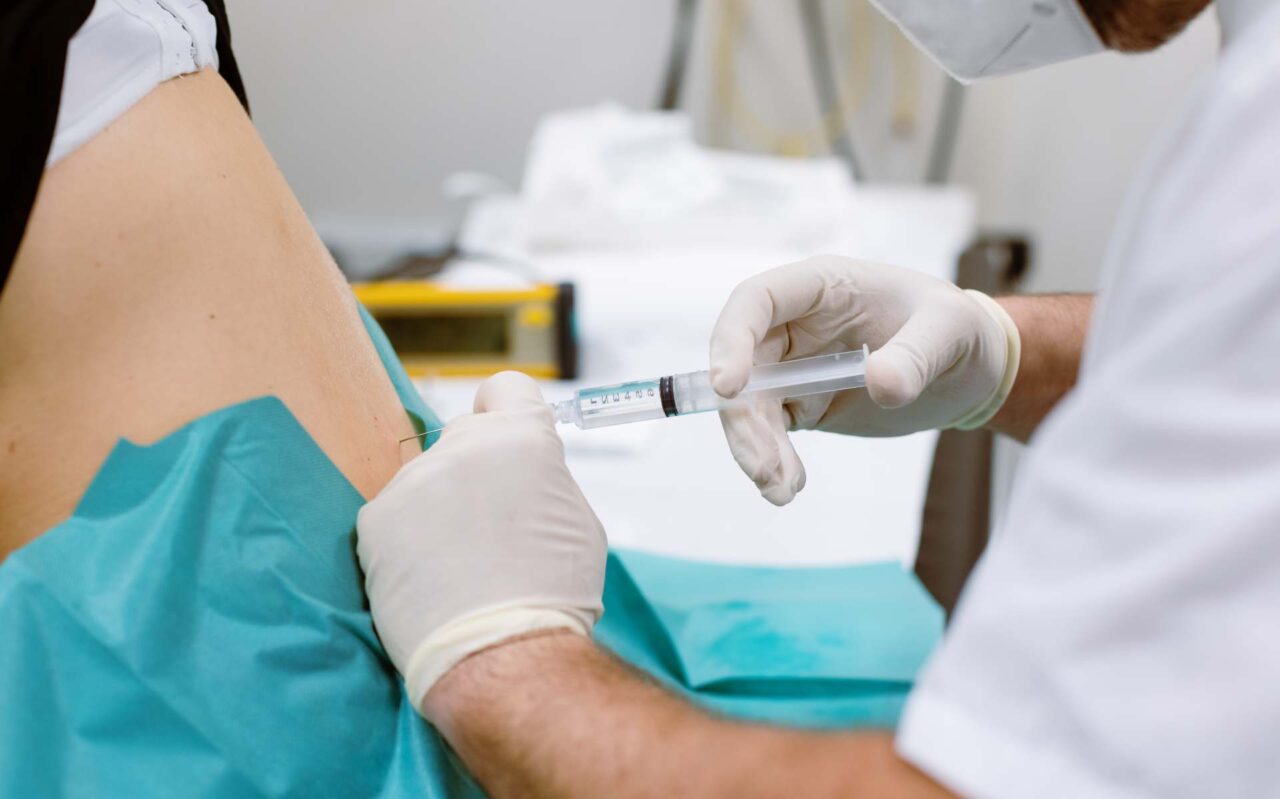
There are several reasons why patients and doctors might consider alternatives to cortisone shots. While effective for many, cortisone injections can cause temporary side effects like pain, swelling, and thinning of the tissues surrounding the injection site. Additionally, repeated cortisone use might weaken tendons and ligaments over time.
Furthermore, the pain-relieving effects of cortisone shots tend to diminish with each subsequent injection. This can be frustrating for patients seeking long-term solutions. Finally, some individuals simply prefer a less invasive approach to managing their pain.
Looking Beyond Cortisone Shots?
Discover long-term relief with SoftWave Therapy. Start with your first session for only $69.
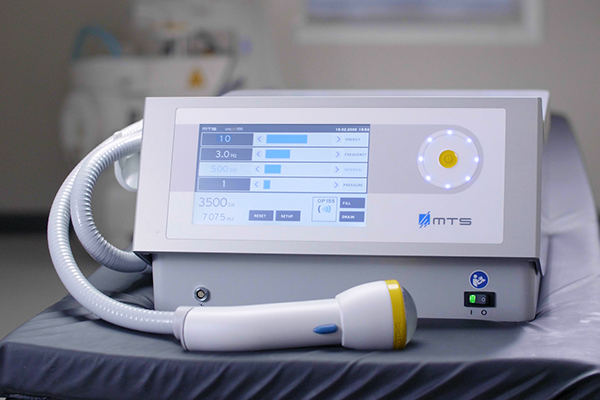
Exploring Alternative Treatments for Knee Pain
Fortunately, there are several promising alternatives to cortisone shots for knee pain. Here, we’ll explore some of the most popular options:
Physical Therapy: A Non-Invasive Approach
Physical therapy offers a safe and effective way to manage knee pain. Through targeted exercises and strengthening routines, physical therapists can help improve flexibility, range of motion, and muscle strength around the knee joint. This not only reduces pain but also helps prevent future injuries by strengthening the muscles that support the knee. A typical physical therapy program might include:
- Manual therapy: Techniques like massage and joint mobilization can improve flexibility and reduce stiffness in the knee.
- Strengthening exercises: Exercises that target the quadriceps, hamstrings, and calves help stabilize and support the knee joint.
- Balance training: Improved balance can reduce the risk of falls, which can further injure the knee.
- Aerobic conditioning: Low-impact exercises like swimming or cycling can improve overall fitness and reduce pain.
Acupuncture: An Ancient Technique for Modern Pain Relief
Acupuncture is an ancient Chinese medicine practice that involves inserting thin needles into specific points on the body. Studies suggest acupuncture can effectively manage knee pain by stimulating the body’s natural pain-relieving mechanisms. It is thought to work by:
- Triggering the release of endorphins: Endorphins are the body’s natural painkillers. Acupuncture may stimulate the production of these hormones, leading to pain relief.
- Modulating the nervous system: Acupuncture may help regulate the nervous system’s response to pain signals.
- Improving blood flow: Acupuncture needles may increase blood flow to the affected area, promoting healing.
Many patients also report feeling a sense of relaxation and improved overall well-being after acupuncture sessions. It’s important to find a licensed and experienced acupuncturist for optimal results.
PRP Injections: A Natural Alternative
Platelet-Rich Plasma (PRP) therapy utilizes a patient’s own blood to promote healing. PRP injections involve concentrating platelets, which are rich in growth factors, from a blood sample. This concentrated solution is then injected into the injured area, stimulating tissue repair and reducing inflammation in the knee joint. The benefits of PRP therapy include:
- Reduced inflammation: Platelets contain substances that help reduce inflammation and promote healing.
- Enhanced tissue regeneration: Growth factors in PRP stimulate the growth and repair of damaged tissues in the knee.
- Faster healing times: PRP therapy may accelerate the healing process compared to traditional methods.
While generally well-tolerated, PRP injections can be slightly uncomfortable during the procedure.
SoftWave Therapy: Advanced Regenerative Healing
SoftWave Therapy is a cutting-edge, non-invasive treatment option for knee pain. It utilizes low-intensity broad-focused shockwaves for knee pain to stimulate the body’s natural healing processes. SoftWave therapy promotes cell regeneration, improves blood flow, and reduces inflammation, leading to significant pain relief and improved joint function. Here’s a closer look at how SoftWave therapy works:
- Low-intensity shockwaves: These waves penetrate deep into the tissues, promoting cellular activity and stimulating the growth of new blood vessels without causing microtrauma.
- Improved blood flow: Increased blood flow delivers essential nutrients and oxygen to the injured area, promoting healing.
- Reduced inflammation: SoftWave therapy helps modulate the inflammatory response, leading to pain relief.
Patient testimonials and clinical studies support the effectiveness of SoftWave therapy in treating knee pain. SoftWave therapy offers a safe and painless treatment option with long-lasting results.
Hyaluronic Acid Injections: Enhancing Joint Lubrication
Hyaluronic acid is a substance naturally found in the knee joint that acts as a lubricant. Hyaluronic acid injections replenish this lubricant, reducing friction within the joint and improving movement. These injections can offer pain relief and increased mobility for individuals with knee osteoarthritis, where the natural hyaluronic acid diminishes. The benefits of hyaluronic acid injections include:
- Improved lubrication: Injected hyaluronic acid acts like a lubricant within the knee joint, reducing friction and pain during movement.
- Increased range of motion: With less friction, the knee joint can move more freely, leading to improved flexibility and range of motion.
- Pain relief: Reduced friction and inflammation can significantly decrease knee pain.
Hyaluronic acid injections are typically a series of injections administered over several weeks. While generally safe, there can be mild side effects like temporary pain, swelling, and redness at the injection site.
Lifestyle Changes: Long-Term Solutions for Knee Health
Lifestyle modifications play a crucial role in managing and preventing knee pain. Here are some key strategies:
- Maintain a healthy weight: Excess weight puts extra stress on the knee joints. Losing weight, even a small amount, can significantly improve knee pain.
- Engage in regular low-impact exercise: Activities like swimming, cycling, or walking can strengthen the muscles around the knee and improve joint health without excessive strain.
- Incorporate anti-inflammatory foods: Eating a diet rich in fruits, vegetables, and omega-3 fatty acids can help reduce inflammation throughout the body, including in the knee joints.
- Consider orthotics: Customized shoe inserts can improve alignment and stability, reducing stress on the knees.
Choosing the Right Treatment for Your Knee Pain
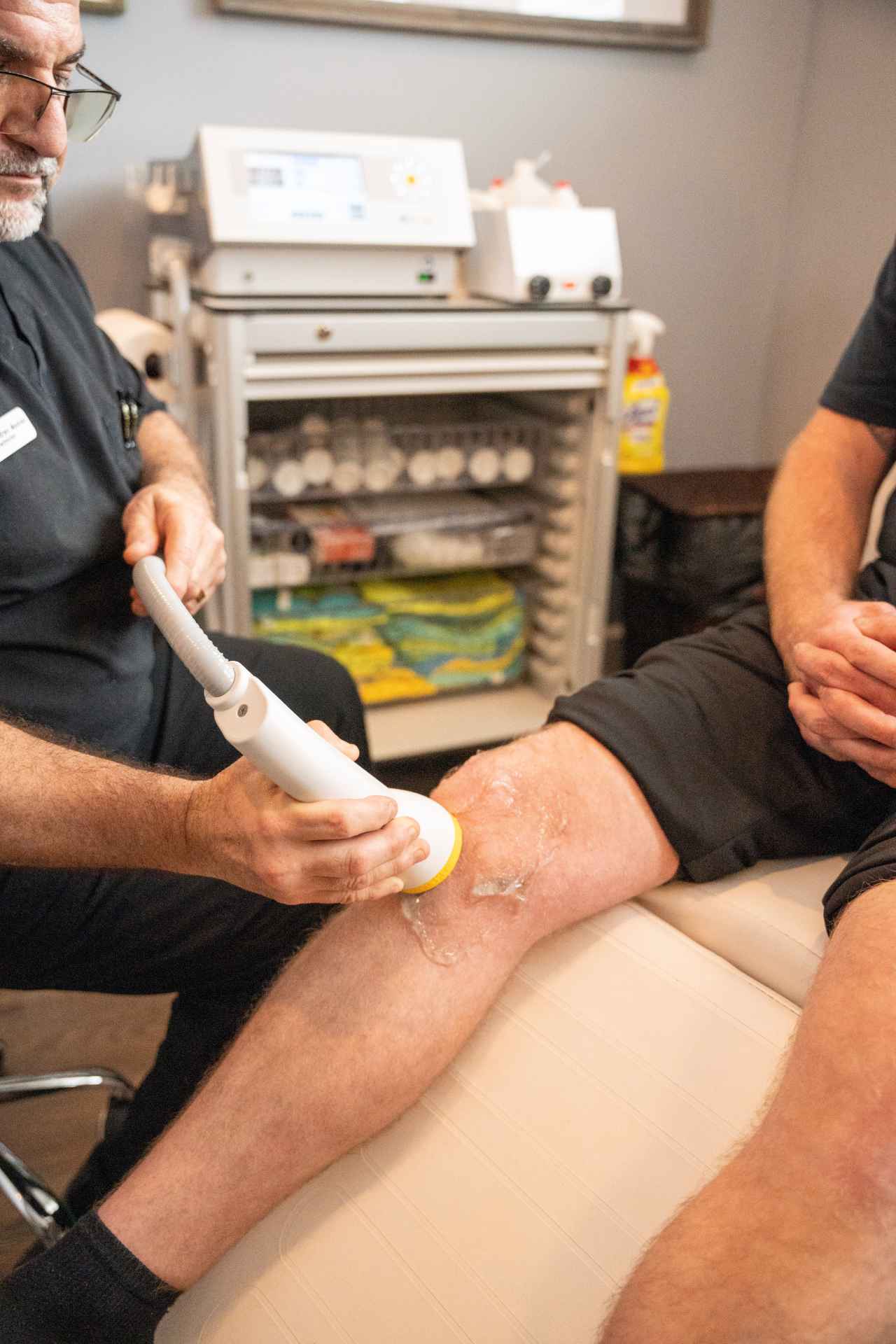
Navigating the various options for knee pain relief can be challenging, but consulting with healthcare professionals can help identify the best treatment for your specific condition. A holistic approach, which combines multiple treatments like physical therapy, acupuncture, and SoftWave therapy, often yields the best results, addressing pain from different angles and promoting overall knee health.
Exploring alternatives to cortisone shots can provide effective relief while minimizing risks and side effects. By working with your healthcare provider, you can create a personalized plan that includes the most suitable and beneficial treatments for your knee pain, helping you regain mobility and improve your quality of life.
The Best Shockwave Therapy for Knee Pain
Are you looking for safe, reliable, and effective relief from knee pain?
SoftWave therapy is FDA-cleared, patented, and nationally recognized for its leading tissue regeneration technology. Unlike other types of high-energy shockwave treatments, SoftWave is the only shockwave therapy on the market that uses true broad-focused shock waves that treat larger and deeper areas of tissue.
Thousands of patients have experienced the benefits of SoftWave for plantar fasciitis, including:
- Little to no side effects
- Short treatment time
- Quick recovery
- Long-lasting results
Find a SoftWave Therapy provider near you or learn more about SoftWave and whether or not you’re eligible for full treatment today!
New Patient Special
Try SoftWave for just $69 at a clinic near you and learn if you’re a candidate for full treatment



